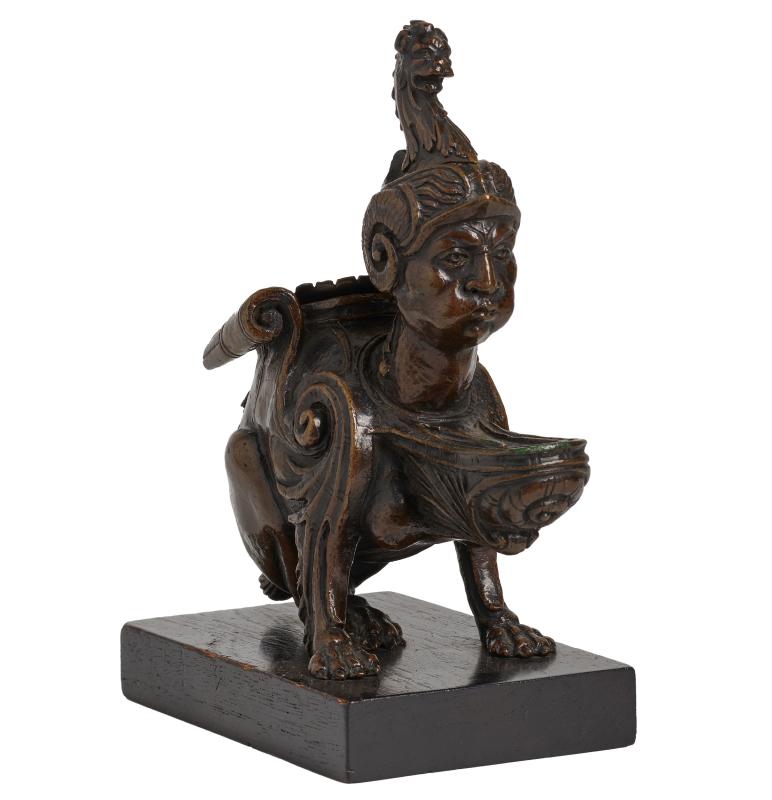
This pair of bronze oil lamps are among the many casts associated with the workshop of Severo da Ravenna and later followers that take the shape of a three-legged sphinx blowing on wick, which would emerge from the burner extended from the chest. The lamp enjoyed significant popularity and it is believed the molds were used throughout the 16th century. Consequently, a sizeable number of variants are known related to AZ128.2, which features a creature with three animal paws, a curled tail, and a foliate decoration along the spine. In contrast, the form of AZ128.1, with its forelegs terminating in human-like hands, is not a common variant. Of the known examples with human-like hands, none share the same forward placement of the hands, or the knobby articulated spine and masks at the shoulders.
Formerly attributed to the workshop of Andrea Riccio (1470-1532).
Two oil lamps in the shape of crouching grotesque sphinxes (with male heads and female breasts) with three "feet." One (AZ128.1) creature has human hands in place of forelegs. Both have been later outfitted with helmets and a cover in the shape of a shell on their backs; the bodies were formerly used to contain oil, but were converted in modern times to function as inkwells with fitted containers.
